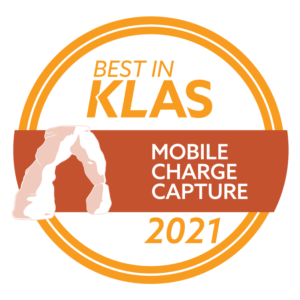Many practicing providers have never experienced a time when they worked in medicine without mobile phone technology. Apps from clinical content to dictation suit the mobile nature of cellular devices – allowing providers to be more productive while on the move. Charge capture technology has been deployed on mobile devices for close to two decades. With a number of charge capture systems available in the app stores with a wide range of capabilities, what are some of the key questions to consider when reviewing various offerings?
Compatibility with Other Mediums
A stand-alone charge capture system for a provider to track his/her daily activity is very different than an enterprise system meant to ultimately centralize coding and billing operations. For team-based deployments, it is critical that the mobile entry method also be complemented by a work station based charge capture capability. Mobility is an important enabler for many providers, but others prefer the larger real estate of workstation screens. An additional consideration is how seamlessly the charge capture solution integrates with coder processing systems and downstream billing systems. The initial capture of the physician charge is only the first step in the complex overall reimbursement process.

The Release History of the App
When assessing mobile charge capture platforms, read customer reviews. Each mature app will have a release history that can be reviewed for fixes and enhancements, and the release history can be trended over time to know what to expect – or know what to ask about. KLAS is also another insightful source of customer and user feedback on mobile charge capture technology.
Counting Clicks and Taps
Assess usability with time motion studies for each of the apps you are considering. How many clicks or taps does it take to create a new charge? A new patient? A subsequent charge on an existing patient? Identify your most common patient scenarios and record vendor demos which walk through the steps necessary to complete the charge capture process. This will enable you to position the solution effectively with providers who may already face technology burden.
Individual Versus Team Settings
For an enterprise charge capture deployment across multiple care settings or facilities, different users will have different configuration requests. For example, pediatric oncology users use a smaller code set than cardiologists. Be sure to understand what settings can be configured at different levels to ensure that the individual and specialty level customization you require can be accomplished High levels of workflow tailoring are boons to user-adoption.
Understanding Feature Set Differences
With any smartphone app, the feature set on a device is more limited than what is available via a web browser. While we have generally grown accustomed to this as consumers, providers expecting to use mobility in concert with a web-based offering may view some certain feature differences as significant barriers to adoption. Be sure to ask vendors to identify where feature gaps exist. When it comes to driving adoption of mobile charge capture the app should give an end-user all that is needed for an intuitive and complete experience.
Want to learn more about mobile charge capture? medaptus has been the KLAS leader for the past 11 out of 12 years. Let us show you a brief demo of our system today! Click here to get in touch with medaptus!
Get the latest updates and news delivered to your inbox.
Subscribe to our newsletter today.





